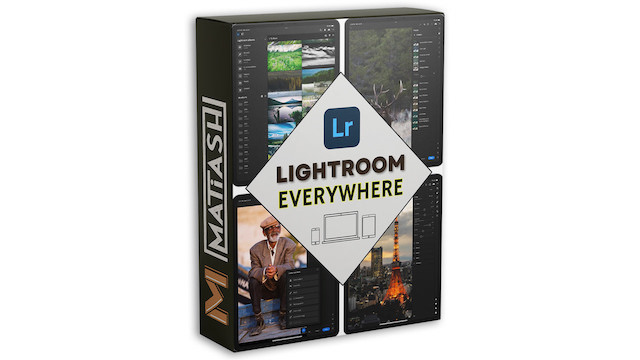I’ve Used Lightroom for Years—And I Just Learned This! (5 Hidden Tricks)

If you've spent any time editing in Lightroom Desktop, chances are you’ve got a comfortable rhythm going. But every now and then, a small discovery can improve your workflow or unlock a feature you didn’t know existed. In this post, I’m sharing five lesser-known Lightroom tricks that are more about practical efficiency than flashy features—exactly the kind of refinements that make editing smoother over time.
1. Switch the Filmstrip to a More Useful View
If you’re someone who uses stacks (especially for panoramas or HDR brackets), there’s a small but impactful setting that can make your workflow easier. Most people are familiar with the filmstrip view that pops up when viewing a stack—by default, it shows a “photo grid” style. But what you might not know is that you can change this to a square grid, which displays file names, star ratings, and sync status—details that are crucial if you want to quickly assess or organize images.
To switch to the square grid:
-
Enter Detail View (press
Dor double-click an image). -
Right-click inside the filmstrip area.
-
Select Film Strip Style → Square.
This view makes it easier to manage stacked images and gives you better metadata visibility—all without leaving the detail pane.
2. Applying Metadata to All Images in a Stack
Let’s say you’re preparing a series of pano brackets for merging and want to mark them all with a one-star rating. If you only have the stack selected (without expanding it), Lightroom will apply the rating to just the top image—not the entire stack.
To apply a star (or any metadata) to all images in a stack:
-
Expand the stack using the number badge.
-
Use Shift+Click or Cmd+Click (Mac) / Ctrl+Click (Windows) to select all images.
-
Then apply your rating, pick flag, or other metadata.
This is especially helpful before merging, since metadata like star ratings can carry over to your final pano or HDR result. Just don’t forget to check whether you’ve enabled “Add to Stack” after merging—if not, you can always drag the new pano into the stack manually and set it as the cover photo.
3. Retain Fujifilm Film Simulations in RAW Files
Fujifilm users, this one’s for you. If you shoot RAW but still love Fuji’s built-in film simulations, Lightroom can preserve and apply those profiles—if you enable the right setting before import.
Here’s how:
-
Go to Preferences → Import.
-
Under “Raw Defaults,” change the setting from Adobe Default to Camera Settings.
This tells Lightroom to match your camera’s film simulation as closely as possible when processing RAW files. So if you used Classic Chrome or Eterna in-camera, Lightroom will apply the corresponding camera-matching profile on import (assuming it’s supported). It’s a small change that makes a big difference for photographers who care about their camera’s color rendering but still want the flexibility of editing RAW.
4. Quickly Delete Multiple Distraction Removal Pins
If you’ve tried Lightroom’s newer Distraction Removal: People tool introduced in version 8.4, you may have noticed how tedious it can be to delete multiple detected people if you don’t want them removed.
There’s a faster way:
-
Hold Option (Mac) or Alt (Windows).
-
While still holding, click and drag a selection box over the pins you want to remove.
That’s it. Every pin inside your selection disappears at once. It’s a small usability tweak, but it saves time and frustration when working with a large number of auto-detected distractions.
5. Export Multiple Versions in One Click
Lightroom’s Versions feature is one of the most underrated tools in the app. It lets you save different editing states—useful for social media posts, alternate crops, or black and white conversions. But what’s not immediately obvious is that you can export all named versions of an image in one go.
Here’s how:
-
After creating your versions (e.g., square crop, vertical crop, black and white), click the three-dot menu next to the Versions panel (not the version itself).
-
Choose Export → All Named Versions → JPEG (or your preferred format).
-
Lightroom will export each version with your custom names added to the filename.
This is perfect for preparing content for different platforms (like Instagram posts, stories, or website portfolios) without needing to export each one manually.
It's Time to Learn How To Use Lightroom Everywhere!
If you enjoyed this topic and want to learn how to get the most out of Lightroom's cloud-based ecosystem on the desktop, smartphone, and tablet, then you should check out my Lightroom Everywhere course! It has over ten hours of easy-paced lessons that'll teach you how to make the most out of Lightroom Desktop, Mobile, and Web.




